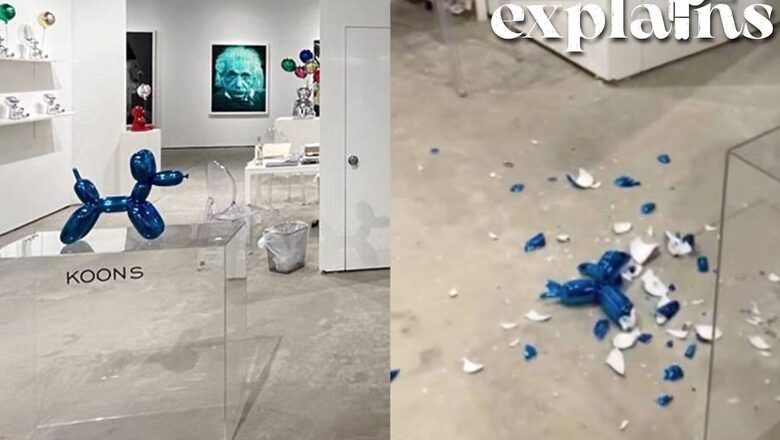
views
A collector visiting a contemporary art fair accidentally toppled over a small glass sculpture by renowned artist Jeff Koons, shattering it to pieces. The shiny blue sculpture, one of Koons’ famous “balloon dog” series, was valued at $42,000. Read more on this
The mishap occurred during a VIP preview at Art Wynwood in Miami, and some collectors thought it was performance art or a staged stunt. The sculpture sat alone on an acrylic base emblazoned with Koons’s surname.
“I saw this woman was there, and she was tapping (the sculpture), and then the thing fell over and shattered into thousands of pieces,” artist Stephen Gamson told a Fox News affiliate in Miami. Gamson told reporters he thought the woman tapped on the artwork to see if it was a real balloon.
Enough to give you an art attack! Collector shatters $42,000 Jeff Koons dog sculpture at Miami art fair after she tapped it to see if it was a BALLOON and knocked it off stand. https://t.co/TjF9UhbqJZ pic.twitter.com/vS3YDd5N57— Molly Ploofkins™ (@Mollyploofkins) February 18, 2023
A bystander took a video as gallery employees swept up the glass shards. “I can’t believe somebody would knock that over,” a voice is heard to say on the video.
Benedicte Caluch, an art advisor with Bel-Air Fine Art, which sponsored the Koons piece, told the Miami Herald that the woman did not mean to break the piece and that insurance would cover the damage.
But How Is Art Usually Insured?
An art insurance coverage protects treasures such as paintings, sculptures, and other collections against uncertainties, physical damage due to theft, accident, and so on. It compensates the policyholder in the event of physical loss or damage to these precious art artefacts, according to a report by Paisa Bazaar.
Some of the assets or types of art that can be insured under an art insurance policy include drawings, paintings, prints, sculptures, stamps, coins, watches, and books. Anyone who owns antique furniture, fine art, musical instruments, statues, or sculptures can use insurance to protect their valuable artefacts from damage and loss.
Kyle McGrath, Deputy Global Fine Art Practice Leader at AXA XL, told invaluable, that the financial impact associated with a Fine Art loss can be “quite sizeable” when taken into consideration both restoration fees and depreciation in value.
Because most art is stored or presented with other art, there is typically a deteriorating ripple effect, the report says, adding that the risk of a loss affecting many items or even an entire collection is real and that buying art insurance protects the overall value and integrity of the collection.
Purchase Record, Appraisal
The report explains that before art can be insured, insurers will want to see a purchase record and history, which helps to appraise the art at a fair value.
“Insurers typically look for proof of value in one of two ways, either recent appraisals conducted by a reputable and known appraiser or auction house, or recent invoices/proof of purchase from the dealer or auction house when the art was bought by the client. Each insurance company will have their own stance on how recent these valuations must be and it often depends on the nature of the work itself and whether that particular artist’s work or medium has been prone to recent fluctuations in value,” Mcgrath told invaluable.
About Koons
Koons, who was not present, is an American painter and sculptor who draws inspiration from everyday objects, including balloon animals. His works challenge notions of what is fine art, even as they have auctioned for as high as $91 million.

His balloon dog sculptures vary in size, from less than a foot (30 centimeters) in height to over 10-feet (three-meters) tall, and come in vivid colors.
Read all the Latest Explainers here




















Comments
0 comment